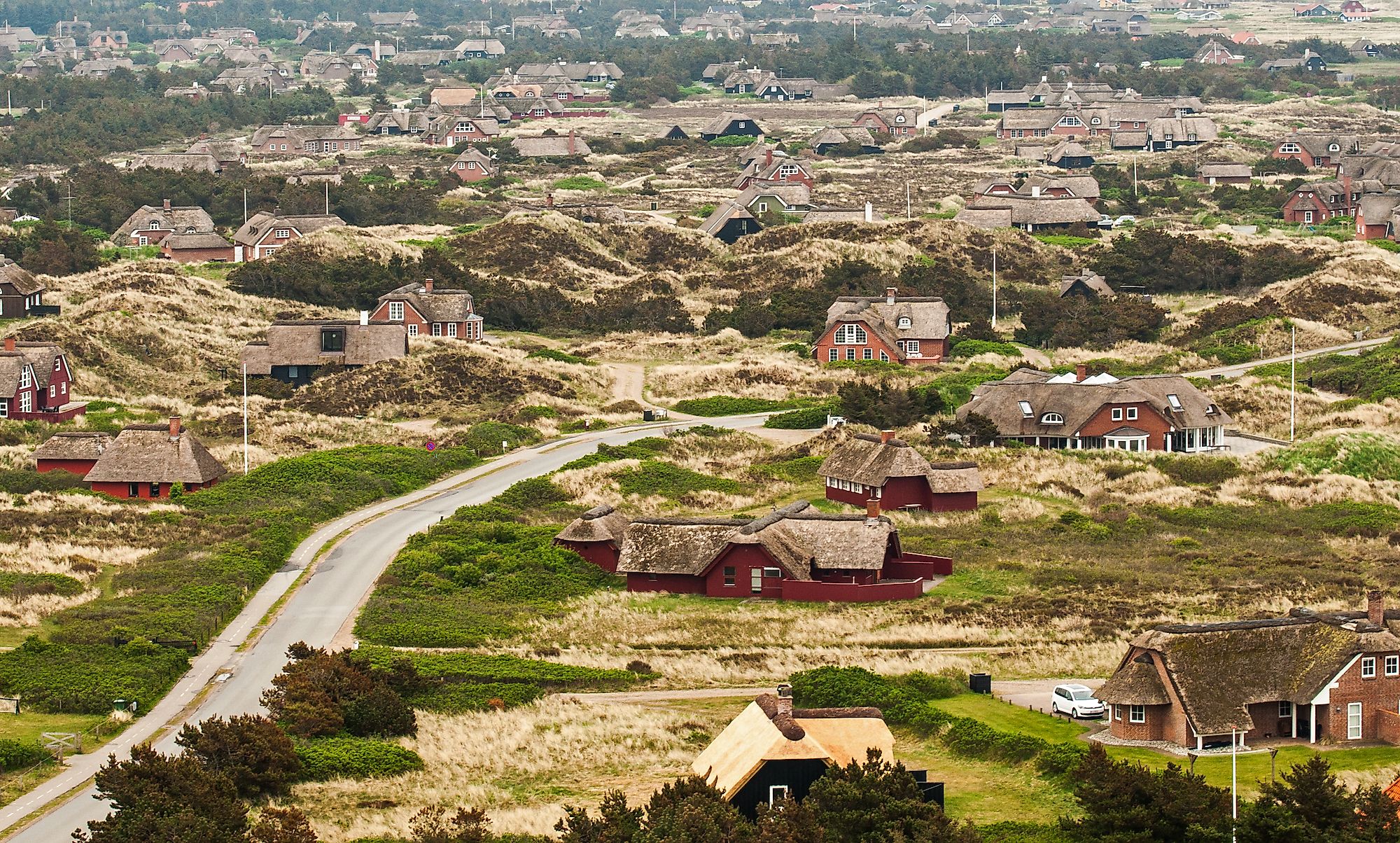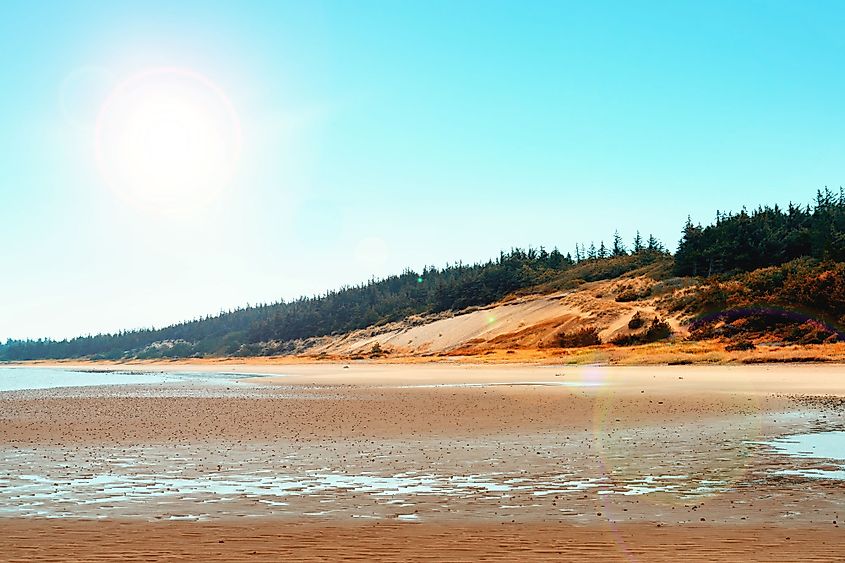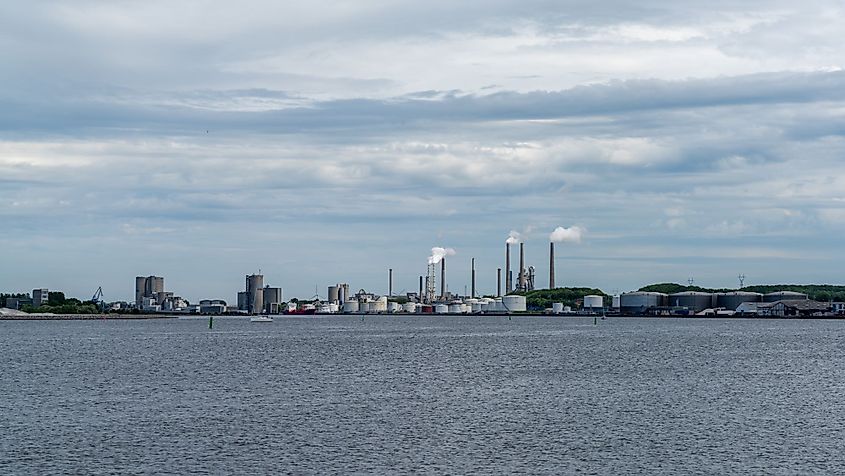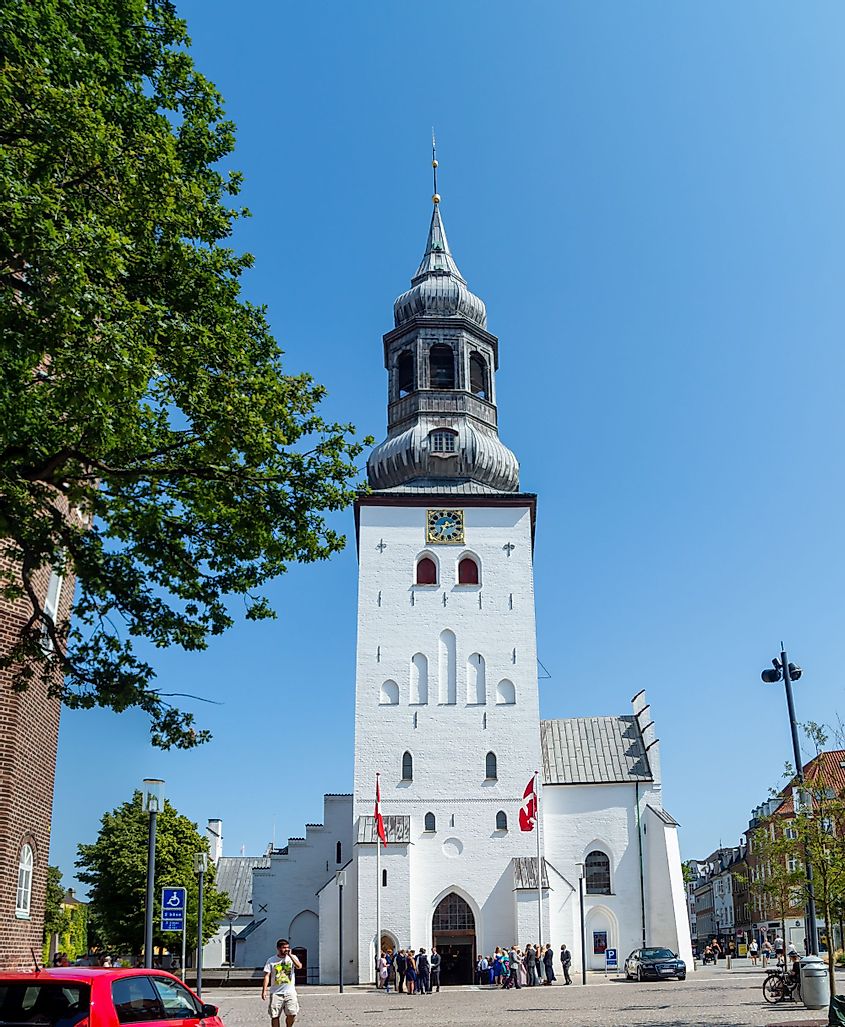
Jutland Peninsula
Formerly known as the Cimbrian Peninsula, Jutland is the name of a peninsula in northern Europe that forms the continental portion of Denmark and parts of northern Germany. This peninsula is bounded by the North Sea in the west, Skagerrak Strait in the north, Kattegat and the Baltic Sea in the east and Germany in the south. Like the rest of Denmark, Jutland’s terrain is flat, with slightly elevated ridges down the central parts and relatively hilly terrains in the east. The Eastern terrains are the fertile portion of Jutland, having lakes and lush forests. On the other hand, the western part includes open lands, heaths, plains and peat bogs, deeming it the infertile portion of Jutland. The southwest area of Jutland is characterized by the Wadden Sea, which is an intertidal zone in the southeast part of the North Sea and a large international coastal region that extends through Germany, Denmark and the Netherlands.
Geography

There are several historical subdivisions and regional names of the Jutland Peninsula, some of which are still being used today. The subdivisions include Slesvig, now known as South Jutland, in addition to West Jutland, East Jutland and North Jutland, which were referred as Himmerland, Vendsyssel-Thy and Hanherred. The whole area of South Jutland was historically known as Nørrejyllland. Jutland encompasses three contemporary Danish Administrative Regions such as North Jutland Region, Central Denmark Region, Southern Denmark Region and portions of the state of Schleswig-Holstein in northern Germany. Today, the largest cities of the Danish section of Jutland are Aarhus, Aalborg, Esbjerg, Randers, Kolding, Horsens, Vejle, Herning, Silkeborg and Fredericia. These cities make up the East Jutland metropolitan area, and are more densely populated than the rest of Jutland.
The southern third of the peninsula is made up of the German Bundesland of Schleswig-Holstein. Schleswig-Holstein originally comprised of two duchies: Schleswig (Danish fief) and Holstein (German fief). These two duchies were separated by the River Eider and were constantly alternating between the German and Danish rule. The Schleswig Plebiscites in 1920 resulted in classifying the Northern Schleswig area as Danish property. Today, the largest German cities in the Jutland Peninsula are Hamburg, Kiel, Lübeck and Flensburg.

The breaching of the North Sea flood caused by the North Sea storm in 1825 created a coast-to-coast connection in northern Jutland, separating it from the mainland. The narrow stretch of water forming this bisector is called the Limfjord, which was originally a brackish water inlet, prior to the flood. The area separated from the mainland Jutland goes by multiple names such as the North Jutlandic Island, Vendsyssel-Thy or Jutland north of the Limfjord. This island is only partly connected to the North Jutland region. However, the storm breach also created the Agger Channel in the Agger Tange of the Limfjord area, which allowed ships to shortcut the Skagerrak Strait. There are also several islands historically linked to Jutland, such as Læsø, Anholt and Samsø in Kattegat and Als at the rim of the Baltic Sea. The Danish Wadden Sea Islands and the German North Frisian Islands also stretch along the southwest coat of Jutland in the German Bight.
History

Historically, Denmark comprised of three lands, one of which was Jutland and the other two being Scania and Zealand. According to Claudius Ptolemy, mathematician and geographer in the 100-170 AD era, Jutland was inhabited by the Teutons, Cimbri and Charudes tribes in ancient Europe. The Angles, Saxons and Jutes migrated from continental Europe to Great Britain around 450 AD. Saxons and Frisii, being early Germanic tribes, migrated to the region in the beginning of the Christian era. In fact, the pagan Danes of the Germanic tribes constructed a system of Danish fortifications called the Danevirke extending from Schleswig and inland halfway across the Jutland Peninsula. The purpose of this system was to have protection from the invasion of the Christian Frankish emperors. The southernmost part of the Peninsula was inhabited by the pagan Saxons. It was until the Saxon Wars in the Nordic Iron Age when Charlemagne violently subdued the pagan Saxons and forced them to convert to Christianity. Old Saxony, the original home of the Saxons in northwest Germany, was later absorbed into the Carolingian Empire and is now referred to as Holstein.
Despite the fact that Jutland was neutral during the First World War, Danes living in North Slesvig, which was part of the German Empire at the time, were conscripted for the imperial Germany army, and an estimate of 5000 Danish South Jutlanders sacrificed their lives serving the German military during that war. Jutland has also witnessed one of the largest naval battles in history, the 1916 Battle of Jutland, fought in the North Sea in the west of Jutland. In this battle, the British Royal Navy engaged the Imperial German Navy, which lead to heavy casualties from both sides. Although the British sustained greater casualties, they remained in control of the North Sea, which is why historians may sometime consider Jutland as a British victory. During World War II, Denmark declared itself neutral, but it was occupied by the Nazis on April 9, 1940. Being regarded of high strategic importance, Germany had considered only occupying the northern tip of Jutland. The coastal areas of Jutland were eventually declared a military zone and access was strictly regulated. Moreover, the Germans worked on extending the Atlantic Wall along the entire west coast of the peninsula in order to resist a potential attack from that coast of Jutland. The Hanstholm fortress in Nordjylland, northern Denmark in Jutland, became the largest fortification in Northern Europe.
Culture
Most people in Jutland lived a rural life, taking jobs as farmers and fishers. Farming and herding were a significant part of the culture since the late Neolithic Stone Age, and fishing began ever since the Peninsula was populated with humans. However, the local culture of the people inhabiting the Peninsula has not been well documented.











